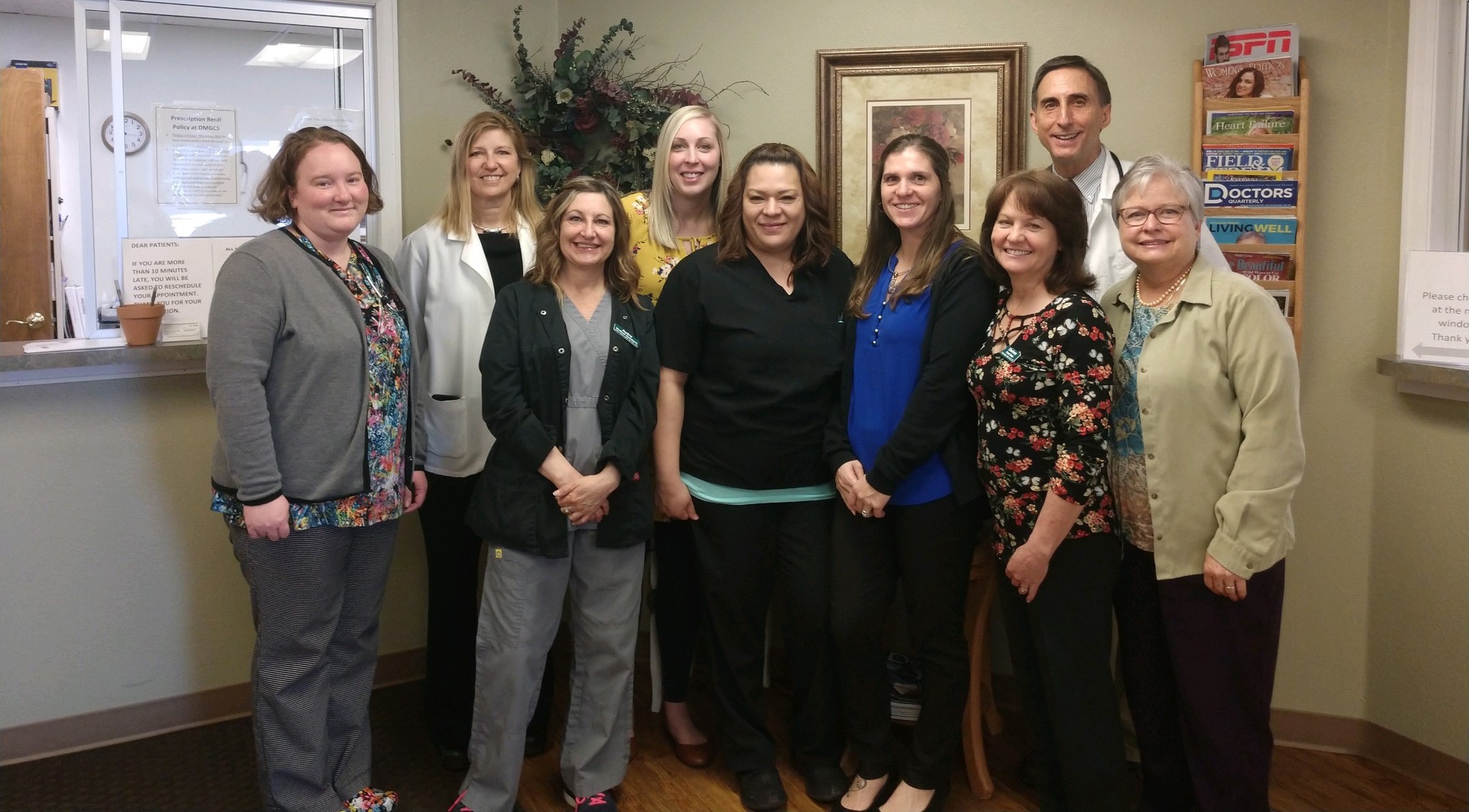(Above photo, from left to right: Jessica, FNP; Peggi, FNP; Audra, RMA; Nicole, ANP; Gaby, RMA; Justine, Front Office, Internal Medicine; Charlene, Front Office, Pediatrics; Dr. Robert Spees; Dr. Annelise Spees)
Doctors Medical Group is a small practice located in Colorado Springs, Colorado, but they’ve achieved big milestones on the practice transformation road to value-based payment.
Within the practice, Dr. Annelise Spees directs the specialty pediatrics practice, and Dr. Robert Spees directs the internal medicine practice. They also have a concierge medicine service and do rounds with nursing home patients. With just two physicians and three nurse practitioners as provider staff, Doctors Medical Group is one of the smaller practices to participate in Colorado-based transformation initiatives (including HealthTeamWorks supported Better Care, Better Costs, Better Colorado and the Colorado State Innovation Model). But HealthTeamWorks Practice Facilitator B.J. Dempsey says they always bring their best to the effort.
“They have truly caught the spirit of what quality improvement and transformation is about,” Dempsey says. “I like to equate them with the people you ask to bring food to the potluck, and they bring ambrosia salad with toasted coconut in a gorgeous bowl. They take a concept, embrace it and run with it.”
Doctor’s Medical Group adapts HealthTeamWorks coaching tools, resources and templates to meet the needs of their specialty practice, as well as generalizing techniques they’ve learned for quality improvement. The group initially began practice coaching in order to attest for meaningful use of its electronic health records system, but they’ve embraced patient empanelment and population health quality measurement. Each month, they select a different quality measure—whether it’s cancer screenings, wellness visits or falls risk assessment—and identify patients who need the services.
“It’s up to the care teams to decide what actions to take to improve the status of those patients, and at the end of the month, they look at that measure again to assess how well they’re performing.” The activity is purely focused on what’s best for the entire patient panel; all qualified patients are included, whether or not the practice is reimbursed for the activity. “So it’s not reactive; rather, it’s ongoing, which speaks to the sustainability piece of population health.”
Getting at the data has not been an easy feat. The group examined the state’s all-payer claims data base (available to all SIM and CPC+ participating practices) and analyzed the common traits there for high-cost, high risk patients. Then they applied a profile of those characteristics to their entire patient panel to identify a master list of patients who could be at risk, based on the high-risk data elements.
“They’re kind of the little engine that could in the workaround department,” Dempsey says. After risk stratification, they implemented care management services for a small number of potentially high-risk patients.
The group has gone the extra mile to offer self-management support and patient engagement, with guidance from a patient advisory group. Providers develop self-management goals for every patient. Behavioral health referrals are co-located in the same office complex, reducing the stigma of having to go to a completely different location. That also contributes toward greater integration with the care team.
Importantly, Doctor’s Medical Group has taken advantage of networking opportunities from the BC3 and SIM programs to learn from other practices on the same path to practice transformation.
“They’re a great role model for other small, independent practices. They demonstrate that you can scale these concepts, and that’s really important,” Dempsey says.









